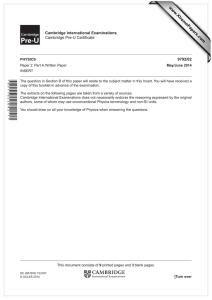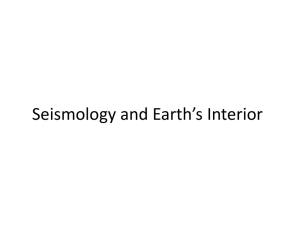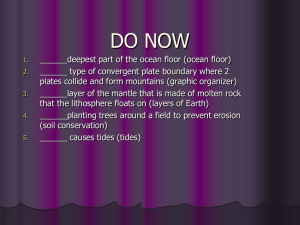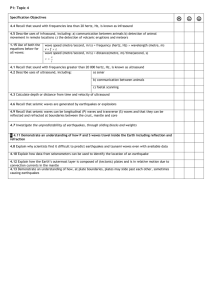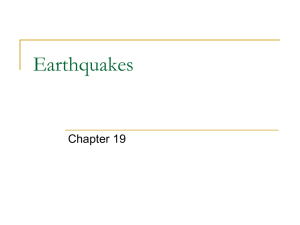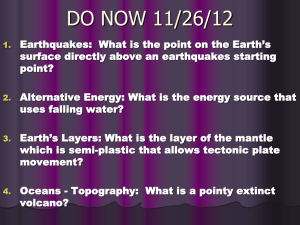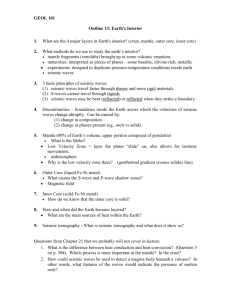www.XtremePapers.com Cambridge International Examinations 9792/02 Cambridge Pre-U Certificate
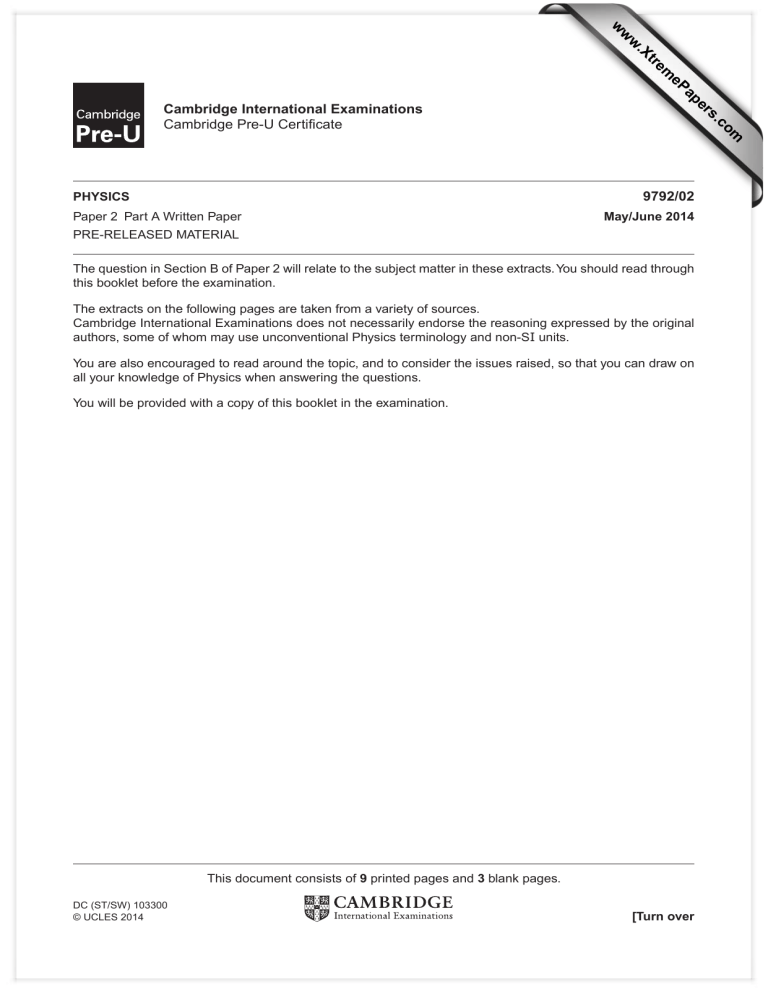
www.XtremePapers.com
Cambridge International Examinations
Cambridge Pre-U Certificate
PHYSICS
Paper 2 Part A Written Paper
PRE-RELEASED MATERIAL
9792/02
May/June 2014
The question in Section B of Paper 2 will relate to the subject matter in these extracts. You should read through this booklet before the examination.
The extracts on the following pages are taken from a variety of sources.
Cambridge International Examinations does not necessarily endorse the reasoning expressed by the original authors, some of whom may use unconventional Physics terminology and non-S
I
units.
You are also encouraged to read around the topic, and to consider the issues raised, so that you can draw on all your knowledge of Physics when answering the questions.
You will be provided with a copy of this booklet in the examination.
DC (ST/SW) 103300
© UCLES 2014
This document consists of 9 printed pages and 3 blank pages.
[Turn over
2
Extract 1: Inside the Earth
We live on the surface of a spherical Earth.
Content removed due to copyright restrictions.
© UCLES 2014 9792/02/PRE/M/J/14
3
Content removed due to copyright restrictions.
Spaceprobes on the surface have detected the seismic waves that result, and these data are used to find out about the interior of the Moon.
© UCLES 2014 9792/02/PRE/M/J/14 from: Physics by D. Sang (p. 421–414)
[Turn over
4
Extract 2: Seismic Waves
Two different types of seismic waves are generated by the sudden movement on a fault: P-waves
(primary waves) and S-waves (secondary waves).
A third type of seismic wave is generated by the interaction of the P- and S-waves with the surface and internal layers of the Earth.
The speed of the waves depends on wave type and the properties of the rock; the denser the rock, the faster the waves travel. In the Earth’s crust P-waves travel at about 7 km per second, while S-waves travel at about 4 km per second.
Fig. E2.1
P-waves, shown in Fig. E2.1, travel fastest. They consist of successive contractions and rarefactions, just like sound waves in air.
The motion of the particles in the rocks that the waves travel through is parallel to the direction of the wave.
Fig. E2.2
S-waves, shown in Fig. E2.2, are slower than P-waves. They are transverse waves, which means that the particle motion is at right angles to the direction of travel. S-waves cannot travel through air or liquids.
from: http://www.bgs.ac.uk/discoveringGeology/hazards/earthquakes/seismicWaves.html
© UCLES 2014 9792/02/PRE/M/J/14
5
Extract 3: Earth’s Internal Structure
By studying the propagation characteristics (travel times, reflection amplitudes, dispersion characteristics, etc.) of seismic waves for the last 90 years we have learned much about the detailed nature of Earth’s interior. Great progress was made quickly because, for the most part, Earth’s interior is relatively simple; divided into a sphere (the inner core) surrounded by roughly uniform shells of iron and rock. Models that assume the Earth is perfectly symmetric can be used to predict travel times of
P-waves that are accurate to a few seconds for a trip all the way across the planet.
Fig. E3.1 shows the velocity and density variations within Earth based on seismic observations. The main regions of Earth and important boundaries are labelled. This model was developed in the early
1980s and is called PREM for Preliminary Earth Reference Model.
upper mantle lower mantle outer core inner core
10 density
(g / cm 3 )
5
Key density
S-wave velocity
P-wave velocity
5
10 velocity
(km / s)
0
0
0
1000 2000 3000 depth (km)
4000 5000 6000
Fig. E3.1
Several important characteristics of Earth’s structure are illustrated in the Fig. E3.1. First note that in several large regions such as in the lower mantle, the outer core, and inner core, the velocity smoothly increases with depth. The increase is a result of the effects of pressure on the seismic wave speed. Although temperature also increases with depth, the pressure increase resulting from the weight of the rocks above has a greater impact and the speed increases smoothly in these regions of uniform composition.
© UCLES 2014 9792/02/PRE/M/J/14
[Turn over
6
We often divide the mantle into two regions, upper and lower, based on the level of velocity heterogeneity. The region between approximately 400 km and 1000 km depth is called the transition zone and strongly affects body waves that ‘turn’ at this depth and arrive about 20°–30° distant from a shallow earthquake. In this depth range the minerals that make up the mantle silicate rocks are transformed by the increasing pressure. The atoms in these rocks rearrange themselves into compact structures that are stable at the high pressures and the result of the rearrangement is an increase in density and elastic moduli, producing an overall increase in wave speed.
Graphite in ‘lead’ pencils and diamonds are a more common example of atoms rearranging themselves under different conditions – they are both composed of carbon. The different arrangement and bonding of the carbon atoms in the two materials produces dramatically different properties. Diamonds are formed under enormous pressures; all natural diamonds formed at depths of about 150–200 km, and were brought to the surface by volcanic activity. At the high pressures the carbon atoms are squeezed into a tight arrangement that makes them one of the hardest materials. In contrast, the low-pressure arrangement of carbon in graphite creates the slippery, soft character of ‘lead’ that we use for pencils.
The two largest contrasts in material properties in the Earth system are located near the surface and the core-mantle boundary. Both are compositional boundaries and the core-mantle boundary is the larger contrast. Other sharp contrasts are observable, the inner-core outer-core boundary is relatively sharp, and velocities increase from the liquid to the solid.
from: http://eqseis.geosc.psu.edu/~cammon/HTML/Classes/IntroQuakes/Notes/waves_and_interior.html
© UCLES 2014 9792/02/PRE/M/J/14
7
Extract 4: The structure of the Earth
Most of what we know about the interior of the Earth comes from the study of seismic waves from earthquakes. Seismic waves from large earthquakes pass throughout the Earth.
These waves contain vital information about the internal structure of the Earth. As seismic waves pass through the Earth, they are refracted, or bent, like rays of light bend when they pass though a glass prism, as shown in Fig. E4.1.
0
30
60 the mantle, magnesium
– iron silicate
90
120
Sh ad ow
Z on e
180
Inner Core, solid iron and nickel
Outer Core, liquid iron and nickel
Fig. E4.1
Because the speed of the seismic waves depends on density, we can use the travel-time of seismic waves to map change in density with depth, and show that the Earth is composed of several layers.
The crust
This brittle outermost layer varies in thickness from 25 to 60 km under continents, and from 4 km to
6 km under the oceans. Continental crust is quite complex in structure and is made from many different kinds of rocks.
The mantle
Below the crust lies the dense mantle, extending to a depth of approximately 2890 km. It consists of dense silicate rocks. Both P- and S-waves from earthquakes travel through the mantle, demonstrating that it is solid.
However, there is separate evidence that parts of the mantle behave as a fluid over very long geological time scales, with rocks flowing slowly in giant convection cells.
The core
At a depth of 2890 km is the boundary between the mantle and the Earth’s core. The core is composed of iron and we know that it exists because it refracts seismic waves, creating a ‘shadow zone’ at distances between 103° and 143° (see Fig. E4.1). We also know that the outer part of the core is liquid because S-waves do not pass through it.
© UCLES 2014 from: http://www.bgs.ac.uk/discoveringGeology/hazards/earthquakes/structureOfEarth.html
9792/02/PRE/M/J/14
[Turn over
8
Extract 5: Locating Earthquakes
By looking at the seismograms from different recording stations we can find out the epicentre of the earthquake.
The signals arrive first at the closest station and last at the one furthest away.
The time difference between the P- and S-waves tells us the distance the earthquake is from the seismograph. Fig. E5.1 shows that, by measuring this at three stations we can work out where the epicentre is.
A
C
B
Fig. E5.1
We need measurements from at least three stations to find the epicentre.
The intersection of the circles whose radius is equivalent to the distance from the earthquake gives the epicentre.
from: http://www.bgs.ac.uk/discoveringGeology/hazards/earthquakes/locatingQuakes.html
© UCLES 2014 9792/02/PRE/M/J/14
9
Extract 6: Studying Geophysics and Seismology
Introduction
Geophysics and seismology teach people to solve geologic problems using physics and maths.
Students learn about electrical, magnetic, radioactive, and gravitational measurements. They also learn geophysical techniques for locating natural resources. In addition, they study environmental hazards such as earthquakes.
Overview
“I feel the earth move under my feet,” could be the theme song for geophysics. Earth’s rigid outer shell is divided into big pieces called tectonic plates. These plates float on hotter, softer rocks in Earth’s mantle or center. Did you know that these plates move between 0.4 and four inches a year? You can’t usually feel it or see it, but geophysicists can measure it. Sometimes we can feel the plates move, especially at their boundaries where they collide and cause earthquakes and volcanoes.
Seismology can give a pretty good picture of what is going on deep inside the Earth. Basically, it is all about seismic waves or vibration waves. These vibrations can occur naturally from earthquakes.
Sometimes scientists create them by sending energy into the ground to see how it bounces off underground layers. Geophysicists who explore for oil, natural gas, minerals, and groundwater do this.
You can also use these techniques in other situations, such as looking for sunken treasures deep below the ocean or finding abandoned oil tanks that can contaminate soil.
As you study geophysics, you learn to measure and analyze many things about Earth that human senses cannot even detect. For instance, you learn to measure Earth’s magnetic field and its radioactivity. Or you might measure small changes in the shape and motion of the Earth. Why are all these tiny measurements useful? By analyzing little measurements, you can understand big events – earthquakes, tsunamis, volcanoes, and landslides.
About 45 colleges in the U.S. offer a bachelor’s degree in geophysics. These programs take four or five years of full-time study beyond high school. Be prepared for a lot of maths, physics, and computer science. Some programs are based on general geophysics. Others emphasize hydrology (the study of water’s relationship with the environment), environmental studies, or exploration geophysics.
An advanced degree may let you specialize more. In addition, most jobs in this field require at least a master’s degree. It takes about six years beyond high school to complete a master’s degree program.
A Ph.D. in geophysics may take an additional two to three years. About 30 universities offer a master’s degree and about the same number of universities offer a Ph.D.
from: http://www.iseek.org/education/fieldOfStudy?id=400404
© UCLES 2014 9792/02/PRE/M/J/14
10
BLANK PAGE
© UCLES 2014 9792/02/PRE/M/J/14
11
BLANK PAGE
© UCLES 2014 9792/02/PRE/M/J/14
12
BLANK PAGE
Copyright Acknowledgements:
Extract 1
Extract 2
Extract 3
Extract 4
Extract 5
Extract 6
© D Sang; Physics; Cambridge University Press; 2001.
© http://www.bgs.ac.uk/discoveringGeology/hazards/earthquakes/seismicWaves.html
© http://eqseis.geosc.psu.edu/~cammon/HTML/Classes/IntroQuakes/Notes/waves_and_interior.html
© http://www.bgs.ac.uk/discoveringGeology/hazards/earthquakes/structureOfEarth.html
© http://www.bgs.ac.uk/discoveringGeology/hazards/earthquakes/locatingQuakes.html
© http://www.iseek.org/education/fieldOfStudy?id=400404
Permission to reproduce items where third-party owned material protected by copyright is included has been sought and cleared where possible. Every reasonable effort has been made by the publisher (UCLES) to trace copyright holders, but if any items requiring clearance have unwittingly been included, the publisher will be pleased to make amends at the earliest possible opportunity.
Cambridge International Examinations is part of the Cambridge Assessment Group. Cambridge Assessment is the brand name of University of Cambridge Local
Examinations Syndicate (UCLES), which is itself a department of the University of Cambridge.
© UCLES 2014 9792/02/PRE/M/J/14

